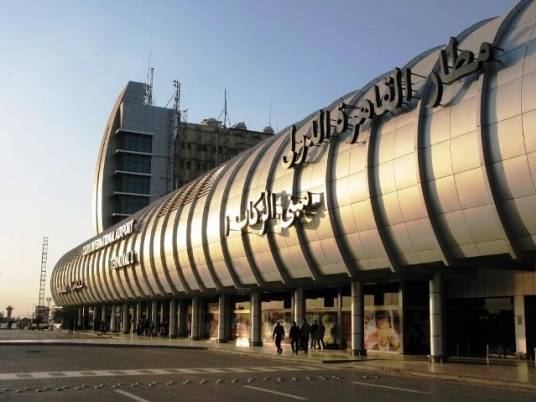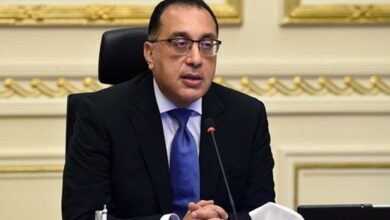Any sensible person would not possibly buy into talk about conspiracies orchestrated against Egypt by elements inside and outside the country, with the identities of the alleged conspirators unknown. The youth who use violence in the demonstrations that have erupted since the Mohamed Mahmoud Street protests can hardly have been hired to sabotage the country. No evidence has emerged to buttress this claim.
The question is: Who are these youth who systematically use violence to express their opinions, if we rule out the possibility they were hired to start the violence?
My answer is that this question is extremely nonsensical.
It is quite paradoxical that we condemn the protesters’ violence, yet manage to justify the violence used by the Interior Ministry under the pretext of protecting vital establishments.
We overlook the fact that Egyptians often use violence in their fights in working-class districts. At our weddings, we dance with swords and knives and jovially fire shots in the air to celebrate. At football matches, we use kerosene to light bonfires and some of us even fill our mouths with gasoline to breathe fire.
The only form of violence people see as a crime is that directed against government establishments, because this is the only kind of violence routinely condemned by our rulers. If there was a genuine intent to curb violence, the political authority should have addressed it as a social phenomenon and a tool that many Egyptians resort to.
Violence by protesters, instead, is the only type of violence that has not been packaged in a way that wins the approval of Egyptians. In fact, even the regime’s more laid-back opponents would think twice before justifying it, even if they secretly approve. They are more likely to adopt the Hosni Mubarak frame of mind, which distinguishes between protesters and “thugs who infiltrate the protests,” as though there were two nations living in Egypt.
They say that if you want to establish the causes of a problem, you need to first see who benefits from it. Violence benefits both the political authority, which uses it to generalize about protests and mask the triggers of public anger, and the opposition, which exploits it to pile on pressure for political gains. Still, both will tell the media that they denounce violence.
Meanwhile, the Interior Ministry’s violence against protesters is applauded by Egyptians hoping for stability, with protesters increasingly portrayed as thugs and saboteurs.
Rather than calling the police, most Egyptians will typically take the law into their own hands and give a criminal a good beating to teach him a lesson. No matter how much we speak about the rule of law and human rights, Egyptians have rarely seen the law indict the oppressor. In their minds, killing “rebellious” protesters and torturing them is a swift, practical solution. The Interior Ministry’s justification of its own violence should be viewed in this light.
I defend the protesters’ violence because I understand why they use it. It was only through violence that the people imposed their will during the revolution.
Mubarak was only prompted to speak on TV after the “Friday of Anger,” on 28 January 2011, when protesters burned police stations. It was the violence of the “Battle of the Camel” that reinvigorated the revolution after Mubarak’s tear-jerking speech.
It was through violence and threats to close the Mugamma administrative building in Tahrir Square and block the Suez Canal in the July 2011 sit-in that the then-ruling Supreme Council of the Armed Forces (SCAF) put Mubarak in prison and on trial. It was through violence that the SCAF was forced to set a date for the handover of power after the Mohamed Mahmoud clashes.
Disappointment in President Mohamed Morsy sparks violence. It appears that, like Mubarak, Morsy too has no solution but suppression by security forces, and even his political solutions are identical to Mubarak’s. When protesters saw in Morsy another version of Mubarak and the SCAF, they resorted to violence — the only tool that made Mubarak and the SCAF listen.
The political leadership has not offered the protesters an alternative. Instead, it insisted on ignoring their peaceful protests and accusing them of being feloul. What’s more, it was stupid enough to believe that violence can be used to stop violence. It seems that while portraying the protesters’ violence as the only form that should be prohibited, the political leadership has failed to recognize that it was also fooling itself.
In Egypt’s poorer districts, when two parties fight, the fight lasts several rounds if both sides are strong, or ends with the stronger party suppressing the other. If an agreement is reached, it is only because the two sides have proven equally potent — or violent.
The political leadership will not acknowledge that its opponent is as strong, which explains why the Interior Ministry has continued to quell protesters from Mubarak’s time to Morsy’s, believing the youth will be defeated, which will not happen.
To those who say the opinion of voters should be respected, I say you also have to respect the fact that violence is often used by Egyptians to express their opinions, even thuggery.
So, either respect the people’s violence or become a hypocrite. That’s the choice.
Mohamad Adam is a journalist at Egypt Independent.
This article was translated from Arabic by Dina Zafer.
This piece was originally published in Egypt Independent's weekly print edition.




